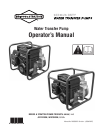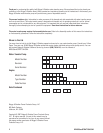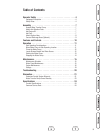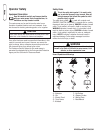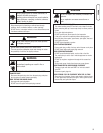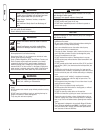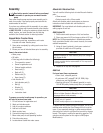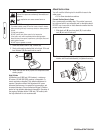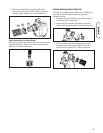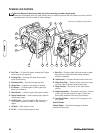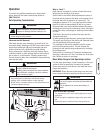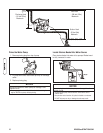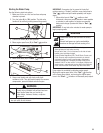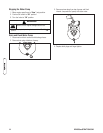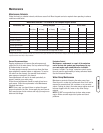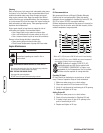
1. Clean area around fuel fill cap, remove cap.
2. Slowly add regular unleaded fuel to fuel tank. Fill to red
level indicator (A). Be careful not to overfill.
3. Install fuel cap and let any spilled fuel evaporate before
starting engine.
High Altitude
At altitudes over 5,000 feet (1524 meters), a minimum
85 octane / 85 AKI (89 RON) gasoline is acceptable. To
remain emissions compliant, high altitude adjustment is
required. Operation without this adjustment will cause
decreased performance, increased fuel consumption, and
increased emissions. See an Authorized Briggs & Stratton
dealer for high altitude adjustment information. Operation of
the engine at altitudes below 2,500 feet (762 meters) with
the high altitude kit is not recommended.
Attach Suction Hose
You will need the following tool to install the hoses to the
water pump:
• 1/4" or 6mm standard screwdriver
Connect Suction Hose to Pump
Use a commercially available hose. The suction hose must
be reinforced with a non-collapsible wall or braided material.
DO NOT use a hose with an inside diameter smaller than the
pumps suction port size.
1. Slide barb cuff (B) over hose barb (C). Insert rubber
seal (D) into end of barb cuff.
2. Screw hose barb assembly onto pump in clockwise
rotation until hose barb assembly is tightened securely.
8 BRIGGSandSTRATTON.COM
WARNING
Fuel and its vapors are extremely flammable and
explosive.
Fire or explosion can cause severe burns or
death.
WHEN ADDING FUEL
• Turn water transfer pump OFF and let it cool at least 2 minutes
before removing fuel cap. Loosen cap slowly to relieve pressure
in tank.
• Fill fuel tank outdoors.
• DO NOT overfill tank. Allow space for fuel expansion.
• If fuel spills, wait until it evaporates before starting engine.
• Keep fuel away from sparks, open flames, pilot lights, heat, and
other ignition sources.
• DO NOT light a cigarette or smoke.
A
D
B
C



